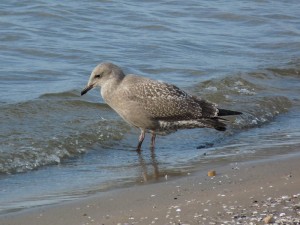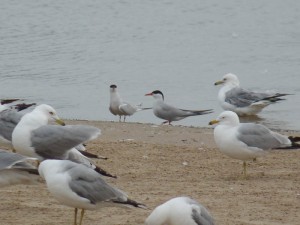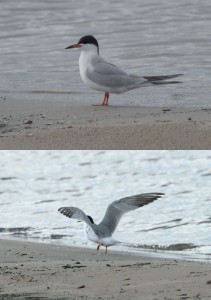Two Whimbrels flew over the east end of Montrose Beach this morning. This was about 6:30. They continued southeast over Lake Michigan and didn’t act like they were going to stop or come back. This is prime time for Whimbrels along Lake Michigan.
Other birds seen at Montrose Beach this a.m. include 9 Semipalmated Plovers, 2 Baird’s Sandpipers, a Lesser Yellowlegs, 2 Sanderlings, single Least and Semipalmated Sandpipers, and a group of about 8 Forster’s Terns.
I went back out in the afternoon and had a Lark Sparrow in the native planting area near the tower. This was most unexpected as Lark Sparrows are very rare at Montrose in the summer and fall.



